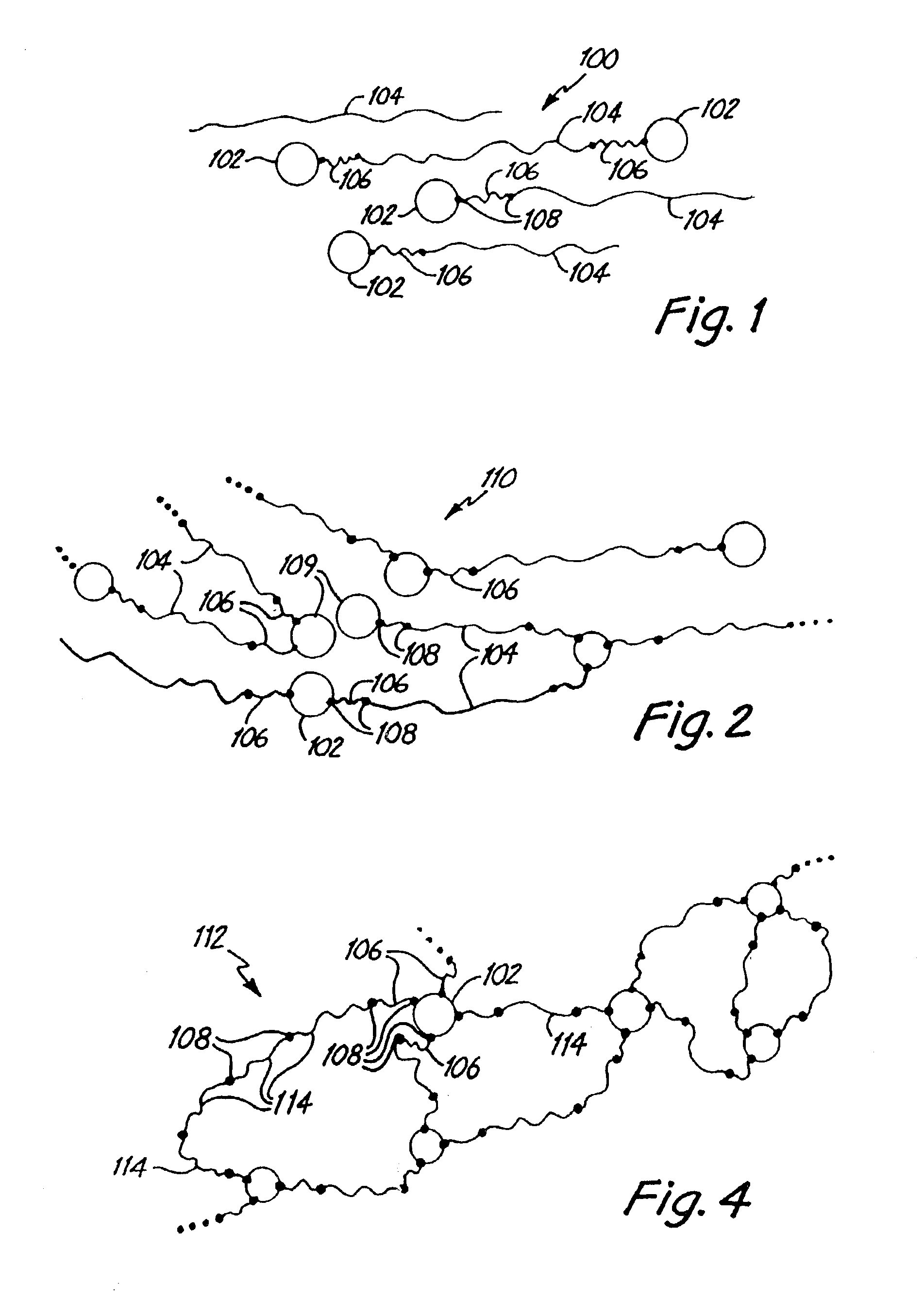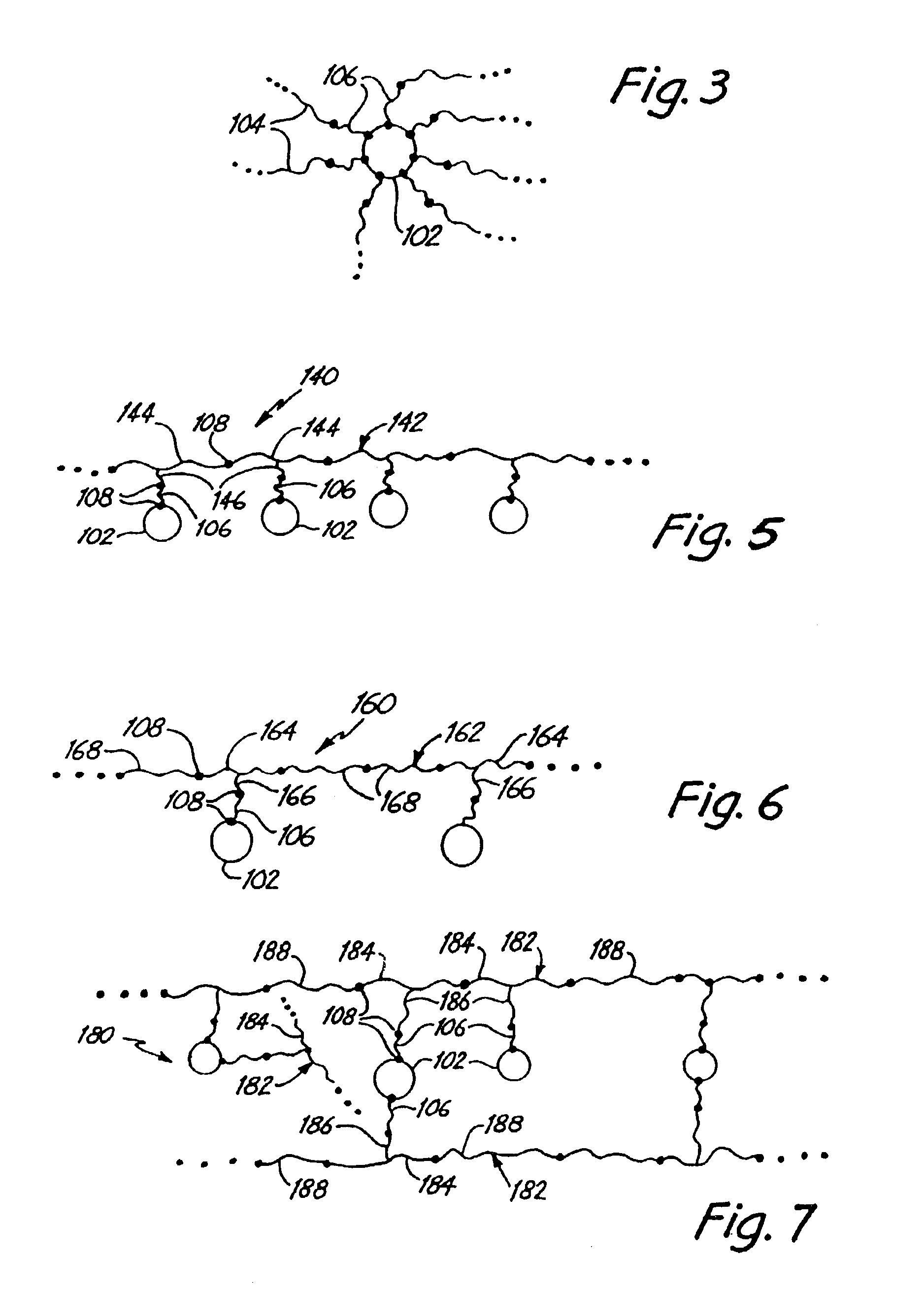Polymer-inorganic particle composites
a technology of organic particles and composites, applied in the field of composites, can solve the problems of general limitation of self-assembly approaches with resp
- Summary
- Abstract
- Description
- Claims
- Application Information
AI Technical Summary
Problems solved by technology
Method used
Image
Examples
example 1
Formation of Titanium Oxide Particles
[0188]Rutile TiO2, anatase TiO2, and oxygen deficient blue TiO2 particles were produced by laser pyrolysis. The reaction was carried out in a chamber comparable to the chamber shown in FIGS. 14-16.
[0189]Referring to FIGS. 14-16, a pyrolysis reaction system 400 includes reaction chamber 402, a particle collection system 404 and laser 406. Reaction chamber 402 includes reactant inlet 414 at the bottom of reaction chamber 402 where reactant delivery system 408 connects with reaction chamber 402. In this embodiment, the reactants are delivered from the bottom of the reaction chamber while the products are collected from the top of the reaction chamber.
[0190]Shielding gas conduits 416 are located on the front and back of reactant inlet 414. Inert gas is delivered to shielding gas conduits 416 through ports 418. The shielding gas conduits direct shielding gas along the walls of reaction chamber 402 to inhibit association of reactant gases or products w...
example 2
Formation of Particle Suspensions
[0197]This example provides a description of the formation of well dispersed dilute solutions of titanium oxide nanoparticles produced by laser pyrolysis, as described in Example 1.
[0198]The suspensions were formed using each of the three types of TiO2 particles described in Example 1. The three powders were separately suspended in water, ethanol, dimethyl sulfoxide (DMSO), cyclohexane, cyclohexanone and phentydrone (1,2,3,4-tetrahydro-9-fluorenone, THF). The suspensions were formed with 9.75 milligrams (mg) of TiO2 powders in 13 grams of liquid resulting in a suspension with 0.075 wt % TiO2. The samples were sonicated for 2 hours each in a sonicate bath. Then, the relative sedimentation of all the samples was visually detected in parallel for two weeks.
[0199]The results are presented in Table 2. The relative sedimentation of all the samples is marked in parentheses following observations after two weeks and then several months, with number 1 being t...
example 3
Surface Treatment of Titanium Oxide Particles
[0206]Surface treatment of the three types of TiO2 particles was performed with aminopropyl triethoxy silane (APTES) as a silylation reagent. APTES is thought to bond to the particles by the following reaction:
Particle-Ti—OH+((CH3CH2O)3—SiCH2CH2CH2NH2→Particle-Ti—O—Si(OCH2CH3)2CH2CH2CH2NH2
Further successive hydrolysis of the ethoxy groups can form additional Si bonds to the particle through ether-type linkages. Some self-polymerization of the silylation reagent can take place also, especially if excess silylation reagent and water are present.
[0207]Based on the measured BET surface areas of the particles, the quantity of APTES ½, 1 and 2 of the particle surface relative to a monolayer of the linker was calculated. Excess silylation reagent can be added because not all of the silylation reagent binds and some self-polymerization of the silylation reagent can take place. To calculate the coverage, the APTES was assumed to bond to the partic...
PUM
| Property | Measurement | Unit |
|---|---|---|
| diameter | aaaaa | aaaaa |
| diameter | aaaaa | aaaaa |
| weight percent | aaaaa | aaaaa |
Abstract
Description
Claims
Application Information
 Login to View More
Login to View More - R&D
- Intellectual Property
- Life Sciences
- Materials
- Tech Scout
- Unparalleled Data Quality
- Higher Quality Content
- 60% Fewer Hallucinations
Browse by: Latest US Patents, China's latest patents, Technical Efficacy Thesaurus, Application Domain, Technology Topic, Popular Technical Reports.
© 2025 PatSnap. All rights reserved.Legal|Privacy policy|Modern Slavery Act Transparency Statement|Sitemap|About US| Contact US: help@patsnap.com



